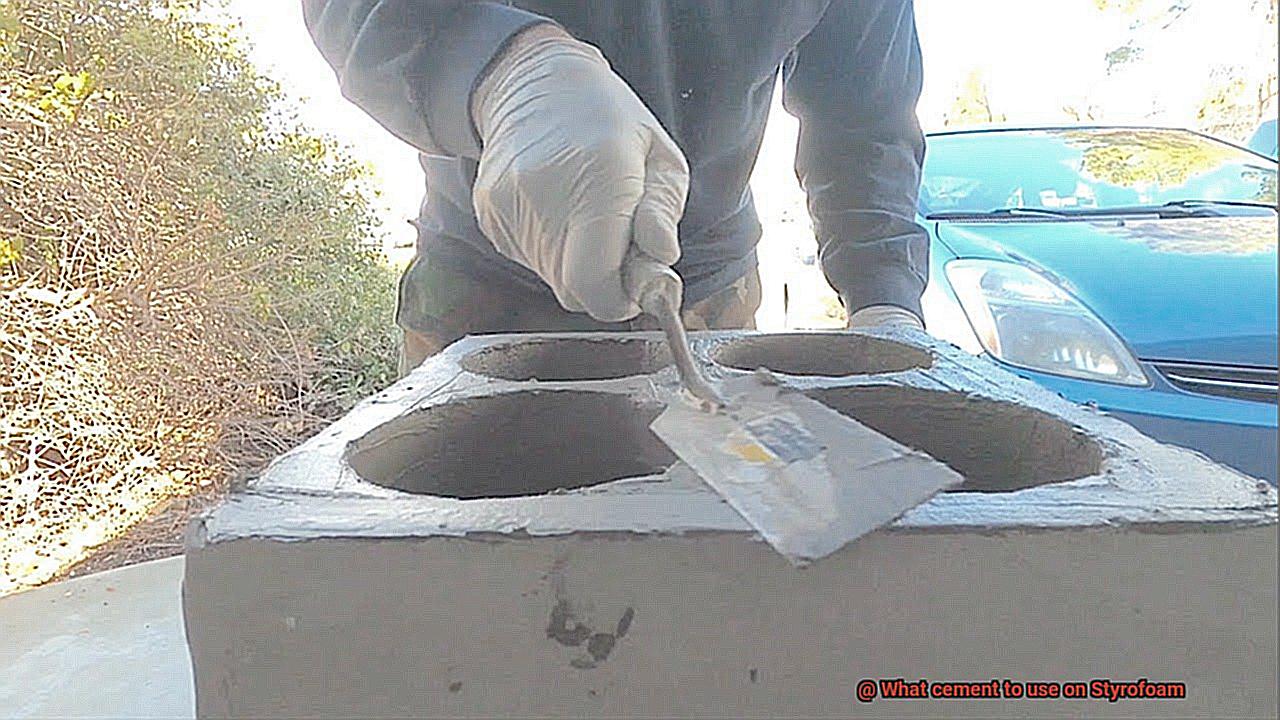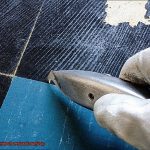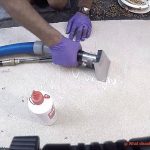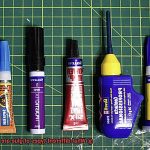Crafting with Styrofoam is like diving into a world of endless possibilities. From architectural models to DIY masterpieces, this lightweight wonder can transform into anything your imagination desires. But hold on tight. Before you embark on your Styrofoam adventure, let’s talk about the unsung hero that holds it all together – cement.
Choosing the right adhesive for Styrofoam is no joke. You don’t want your hard work to crumble before your eyes or dissolve into a sticky mess. That’s why we’re here to guide you through the maze of cement options and help you find “the one” for your projects.
In this blog post, we’ll uncover the secret behind bonding Styrofoam flawlessly. We’ll explore different types of cement and their unique superpowers, so you can make an informed decision that suits your specific needs. Whether you’re a seasoned pro or just starting out on your crafting journey, prepare to unlock the secrets of cementing success and unleash stunning results with your Styrofoam creations.
What is Styrofoam?
Contents
Styrofoam, a widely used material, is likely something you’ve encountered in various forms, from packaging materials to craft supplies. But what exactly is Styrofoam? In this article, we’ll explore the composition, properties, and environmental impact of this unique material.
What is Styrofoam?
Styrofoam is a brand name for expanded polystyrene foam (EPS), a lightweight material made from tiny beads of polystyrene. These beads are expanded and fused together to create the familiar foam structure. Known for its excellent insulation properties, buoyancy, and resistance to moisture, heat, and chemicals, Styrofoam has become a popular choice in various industries.
Properties and Uses:
- Insulation: Styrofoam’s air-filled structure provides exceptional insulation capabilities. It is commonly used in building insulation to reduce noise transmission and maintain temperature control.
- Packaging: With its lightweight and protective qualities, Styrofoam is an excellent choice for packaging fragile items. It cushions contents and prevents damage during transit.
- Craft projects: Styrofoam’s versatility makes it popular for various craft projects such as model building, floral arrangements, and decorative items.
Environmental Impact:
While Styrofoam has advantages, it is crucial to consider its environmental impact. Styrofoam is not biodegradable, meaning it takes a very long time to break down in the environment. Improper disposal can contribute to pollution and harm wildlife. To promote more sustainable alternatives, many cities and countries have implemented bans or restrictions on Styrofoam use.
Adhesive Options:
When bonding Styrofoam, several adhesive options are available:
- Styrofoam glue: Specifically designed for bonding Styrofoam, this liquid adhesive creates a strong and durable connection.
- Hot glue: Hot glue guns can also be used to bond Styrofoam quickly. However, caution must be exercised to avoid excessive heat that can melt or deform the foam.
- Epoxy adhesives: These adhesives provide a strong bond but require precise mixing ratios and may be more expensive.
- Construction adhesives: Polyurethane-based products can be used on Styrofoam, but compatibility must be ensured as some formulas contain solvents that may damage the foam.
Different Types of Cement for Styrofoam
Styrofoam, a lightweight and versatile material, can be bonded using various types of cement. Each type has its own unique advantages and disadvantages, making it crucial to select the appropriate one for your particular project. Here are five popular options:
Craft Glue
Craft glue, a traditional white adhesive, is easy to use and dries clear. It is non-toxic and safe for both adults and children. Craft glue is ideal for projects where the cement will be visible. However, it may not provide the strongest bond and is unsuitable for outdoor use or high humidity areas.
Epoxy Resin
Epoxy resin is a versatile adhesive that can bond Styrofoam with other materials effectively. It offers a strong and durable bond, making it perfect for long-lasting projects. Additionally, epoxy resin is waterproof, making it ideal for outdoor applications or areas with high humidity. However, it can be more challenging to work with due to the need to mix two components before application, and it may have a strong odor during the curing process.
Contact Cement
Contact cement forms a quick and robust bond, making it suitable for projects requiring immediate adhesion. It is typically applied to both surfaces being bonded and allowed to dry before joining them together. This type of cement provides a permanent and flexible bond, making it suitable for projects experiencing movement or vibration. However, it can be toxic and should be used in a well-ventilated area.
Hot Glue
Hot glue guns provide a quick and convenient way to adhere Styrofoam pieces together. Hot glue bonds relatively quickly and withstands regular conditions well. However, it may not be suitable for projects requiring a strong and long-lasting bond, as it can become brittle over time.
Specialized Styrofoam Adhesives
There are specialized adhesives available on the market, specifically formulated to bond Styrofoam. These adhesives offer a strong and durable hold, usually in aerosol form for easy application. However, they can be more expensive compared to other options and may not be as widely accessible.
Styrofoam Glue
Styrofoam, also known as expanded polystyrene (EPS), is a lightweight and versatile material that is commonly used in crafting and construction projects. When it comes to bonding Styrofoam together or adhering it to other surfaces, choosing the right glue is crucial for creating strong and durable bonds.
One popular option is styrofoam glue or adhesive. Specifically formulated to bond polystyrene foam, this type of glue is available in liquid, spray, or hot melt adhesive form. You can find it at craft stores, hardware stores, or online retailers. However, it’s important to check the compatibility of the glue with the specific type of Styrofoam you’re using, as there are different grades available.
If styrofoam glue isn’t your preferred choice, there are other options to consider. Polyurethane-based adhesives are known for their strong bonding properties and work well on Styrofoam. These liquid adhesives create a chemical reaction when applied, resulting in a powerful bond. Another option is epoxy resin adhesive, which provides excellent bonding strength and can be used on various materials including Styrofoam. Keep in mind that epoxy resin adhesive requires mixing before use and has a longer curing time compared to other glues.
When applying glue to Styrofoam, less is more. Applying too much glue can cause the foam to melt or deform, so apply it sparingly and distribute it evenly across the surfaces you want to bond. Before gluing, clean the surfaces to remove any dust or debris for a better bond. You can also roughen the surfaces slightly using sandpaper for an even stronger hold.
Hot Glue
This thermoplastic adhesive is a popular choice due to its ease of use and versatility. However, it’s important to understand the proper techniques and considerations to ensure a strong bond without damaging the Styrofoam. In this comprehensive guide, we will explore everything you need to know about using hot glue on Styrofoam.
Safety first:
When working with hot glue and Styrofoam, safety should be your top priority. Use a low-temperature hot glue gun (around 250°F or 121°C) specifically designed for delicate materials like Styrofoam. Avoid high-temperature glue guns that can melt or deform the Styrofoam. Additionally, always handle the hot glue gun and melted glue with caution to prevent burns.
Prepare the surfaces:
To ensure a successful bond, it’s crucial to prepare the surfaces properly. Clean the surfaces that will be bonded using a soft cloth or sponge with mild soap and water. Removing any dust, dirt, or oils that may hinder adhesion is essential. After cleaning, make sure the surfaces are completely dry before proceeding with gluing.
Apply glue sparingly:
When applying hot glue to Styrofoam, less is more. Use small dots or thin lines of hot glue along the areas that need to be bonded. Applying too much glue can oversaturate the Styrofoam and potentially melt or damage it. By applying the glue sparingly, you can achieve a secure bond without overwhelming the material.
Press and hold:
Immediate action is necessary after applying hot glue to Styrofoam. Firmly press the surfaces together immediately after applying the adhesive. Hold them in place for a few seconds until the glue cools down and solidifies. This ensures a strong connection between the pieces of Styrofoam.
Consider alternative adhesives:
While hot glue provides a strong bond on Styrofoam, it may not be suitable for all applications. For outdoor or heavy-duty projects, consider using epoxy glues, polyurethane foam adhesives, or specialty Styrofoam adhesives for a more durable and long-lasting bond. These alternative adhesives are specifically formulated to provide excellent adhesion on Styrofoam.
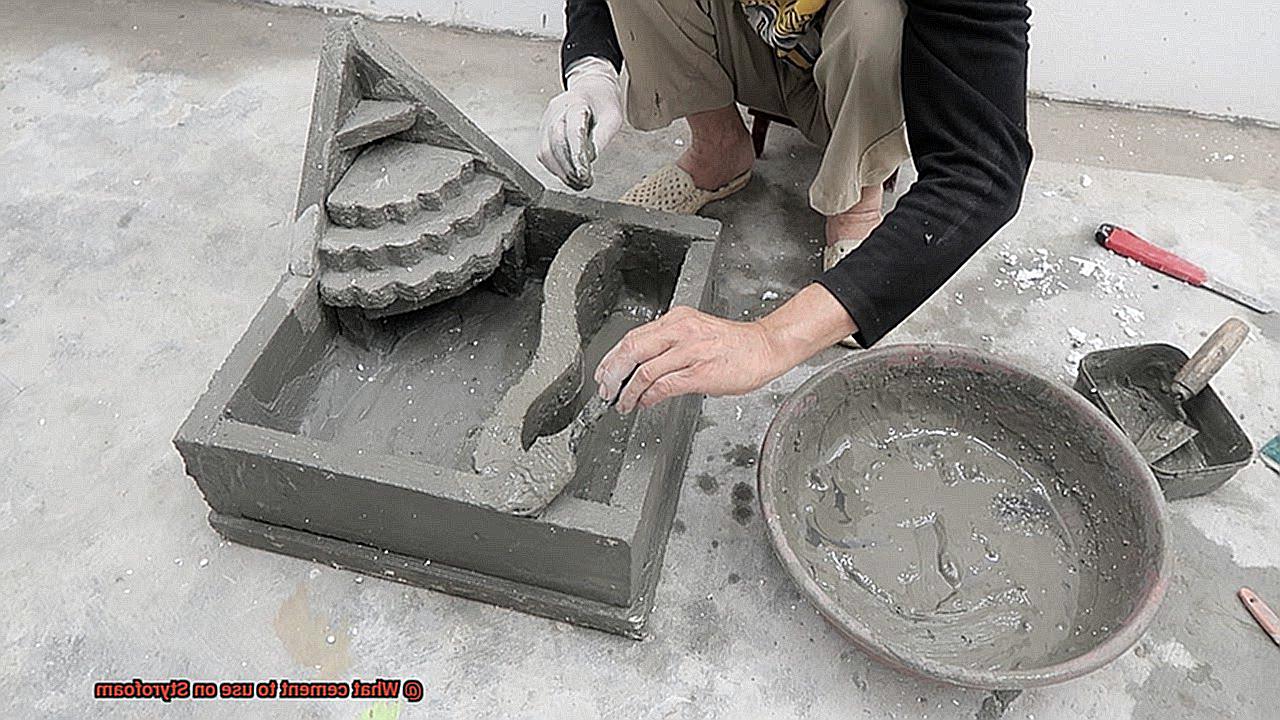
Epoxy Adhesives
Epoxy adhesives are the superheroes of the bonding world, capable of creating an unbreakable bond on your Styrofoam projects. These adhesives work their magic through a chemical reaction between two components – the resin and the hardener. When these components are mixed together, they form a cross-linked network that creates a bond stronger than anything you’ve seen before.
But before you unleash the power of epoxy adhesives, you need to prepare the surfaces properly. Cleanliness is key; rid your Styrofoam of any dirt, dust, or oils that could interfere with the bonding process. And if you want to take it up a notch, roughen the surface of the Styrofoam to increase adhesion. The more surface area for the epoxy to grip onto, the better.
When it’s time to apply the epoxy adhesive, think small and even. Use a brush or spatula to spread the adhesive evenly onto the surfaces to be bonded. Remember, less is more. A thin layer is all you need to create a bond that will withstand even the toughest challenges. Excessive adhesive will only cause headaches as it squeezes out during the bonding process.
With the epoxy applied, it’s time to play hero and hold those pieces together firmly until the adhesive cures. Use clamps, tape, or any other means of applying pressure to ensure a tight bond. And be patient – curing time can vary depending on temperature and humidity. So don’t rush and follow the instructions provided by the manufacturer.
The best part about epoxy adhesives? Once cured, they create a permanent bond that laughs in the face of temperature changes, moisture, and most chemicals. They’re like bodyguards for your Styrofoam creations, ready to protect them from anything Mother Nature throws their way.
But remember, while epoxy adhesives are perfect for Styrofoam bonding, there are other options for more heavy-duty projects. If you need an even stronger bond, consider polyurethane adhesive or construction adhesive.
Construction Adhesives
Today, we’re going to explore the importance of selecting the right adhesive when bonding Styrofoam. This knowledge is crucial for ensuring strong and durable bonds in your projects.
Styrofoam is a unique material that requires a special kind of glue to create a reliable bond. Using the wrong adhesive can lead to weak bonds, crumbling foam, and plenty of frustration. But fear not. I’m here to guide you through the adhesive jungle and help you make an informed decision.
Let’s start with two fantastic options: polyurethane-based adhesive and specialized foam adhesive. Polyurethane adhesives are the superheroes of the construction world. They have excellent bonding capabilities and can stick almost anything together – including Styrofoam. These adhesives come in liquid form and require finesse when applying. Ensure your Styrofoam surface is clean, dry, and lightly sanded for optimal bonding power.
If you prefer an adhesive that’s as easy as pie to apply, look no further than specialized foam adhesive. This magical concoction comes in handy aerosol cans and is specifically formulated for porous surfaces like Styrofoam. Talk about convenience. Just spray it on, let it dry (which happens in a flash), and voila – a bond that can withstand moisture and temperature changes.
However, steer clear of cement-based adhesives when it comes to Styrofoam. Their high alkalinity can wreak havoc on this delicate foam material, causing it to weaken over time. We definitely don’t want that.
So remember, choose wisely when selecting an adhesive for your Styrofoam projects. Polyurethane-based and specialized foam adhesives are your best friends in this bonding adventure. With the right adhesive, you’ll create bonds so strong, they’ll make Superman jealous.
Specialty Adhesives for Bonding Styrofoam to Other Materials
Your search ends here. In this comprehensive guide, we will delve into the world of specialty adhesives specifically designed for this purpose. Get ready to discover a range of adhesives that will ensure a strong and durable bond, keeping your Styrofoam securely attached to any surface.
First on our list is the polystyrene adhesive, a crowd favorite. Formulated exclusively for bonding Styrofoam, this adhesive works its magic on various surfaces including wood, metal, plastic, and even other pieces of Styrofoam. With its resistance to heat and moisture, this adhesive is perfect for both indoor and outdoor applications.
Next up is the polyurethane adhesive, known for its excellent bonding strength and flexibility. This adhesive can create a firm connection between Styrofoam and materials like concrete, glass, ceramics, and fabric. Its water-resistant properties make it ideal for use in wet environments.
For those seeking an adhesive with superhero-like strength, epoxy adhesives are the way to go. Composed of two components – a resin and a hardener – these adhesives produce a robust bond that can withstand extreme temperatures and harsh environmental conditions. If you’re bonding Styrofoam to metal or glass, epoxy adhesives are your secret weapon.
But wait, there’s more. Multipurpose adhesives are also available if you need a versatile option. While they may not offer the same level of specific bonding strength as the specialty adhesives mentioned above, they can still provide a reliable bond for most applications. These all-rounders can take on the challenge of bonding Styrofoam to various materials such as wood, metal, plastic, and more.
When selecting an adhesive for your Styrofoam bonding project, consider factors such as the materials involved, environmental conditions, and intended use. Following the manufacturer’s instructions and recommendations for application and curing time is crucial to achieve optimal results.
Testing the Chosen Cement or Adhesive on a Small Area First
If you’re about to embark on a Styrofoam project, there’s one step you absolutely can’t skip – testing the chosen cement or adhesive on a small area first. Trust me, it’s a game-changer that will save you from potential disasters.
Now, you might be wondering, why is this tiny test so crucial? Well, let me break it down for you. Styrofoam is a unique material that requires special care when it comes to bonding. Not all glues are created equal, and some can wreak havoc on your beloved foam. We definitely don’t want to see your Styrofoam masterpiece turn into a melted mess, right?
So, here’s the deal. By testing your chosen cement or adhesive on a small area of Styrofoam, you can avoid any potential disasters and ensure compatibility between the glue and the foam. It’s like a trial run before the big show.
Here’s how you can conduct this important test:
Grab a small piece of Styrofoam that matches the one you’ll be using for your project. You want it to be representative of the foam’s type and thickness.
Apply a small amount of your chosen cement or adhesive onto the selected area of the Styrofoam. Use an appropriate applicator for the product – brush, sponge, or whatever floats your boat.
Let the glue dry completely according to the manufacturer’s instructions. This could take anywhere from a few minutes to several hours, depending on the product.
Now comes the moment of truth. Take a good look at the tested area. Is there any damage? Melting? Warping? Discoloration? Loss of structural integrity? We definitely don’t want any of that. Also, check if the bond between the Styrofoam and the glue is strong and secure.
If everything looks good – hooray. You can proceed with your project, knowing that the chosen cement or adhesive is a match made in heaven for your Styrofoam. But if there are any concerns or negative effects, it’s time to find an alternative glue specifically formulated for foam materials.
Remember, different glues can yield different results when tested on Styrofoam. So, if you have a few options at hand, it’s worth testing multiple products to find the perfect fit for your project.
By taking a few minutes to test your chosen cement or adhesive, you’re ensuring a successful and stress-free bonding experience with your Styrofoam. Trust me, it’s a small investment of time that will pay off big time in the end.
IT0Y76_RKlk” >
Conclusion
When it comes to finding the right cement for Styrofoam, there are a few options that can get the job done effectively. One popular choice is using a styrene-based adhesive, which is specifically designed to bond with Styrofoam surfaces. This type of adhesive provides a strong and durable hold, ensuring that your Styrofoam project stays intact.
Another option is using a hot glue gun with low-temperature glue sticks. The heat from the gun melts the glue, allowing it to seep into the tiny crevices of the Styrofoam and create a secure bond. This method is quick and easy, making it ideal for smaller projects or when you need an immediate fix.
For more heavy-duty applications, epoxy resin can be used on Styrofoam. Epoxy resin is known for its exceptional strength and durability, making it perfect for projects that require a long-lasting bond. However, it’s important to note that working with epoxy resin requires careful handling and proper ventilation due to its strong fumes.
In conclusion, choosing the right cement for your Styrofoam project depends on your specific needs. Whether you opt for a styrene-based adhesive, hot glue gun with low-temperature glue sticks, or epoxy resin, each option offers its own advantages in terms of strength and ease of use.

